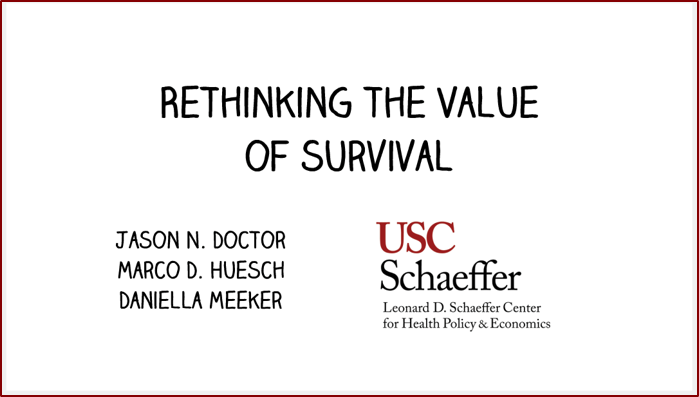Clinical trials rely heavily on median and mean progression free or overall survival numbers when measuring the value of one treatment compared to another. Intuitively this makes sense as most individuals prefer more survival to less. It becomes more complicated though, when you consider additional factors that may also weigh in a patient’s treatment choice.
For example, if a treatment includes a small chance of a substantial negative outcome, a patient may prefer avoiding the risk even if the average survival of the alternative treatment is less. On the other hand, if a treatment offers the chance of a cure, patients may prefer to take the treatment even if the alternative has a higher average survival—effectively trading in average survival for hope.
To evaluate how patients value risk and hope in treatment options, Jason Doctor and his colleagues assigned 2,000 people across the United States to a survey. Jason Doctor is the director of health informatics at the Schaeffer Center. His coauthors were Marco Huesch of the USC Price School of Public Policy and Daniella Meeker of the Schaeffer Center and Keck School of Medicine at USC.
Participants were asked to select their preference between treatments with different rates of survival. In one scenario, treatment A came with a risk of a very bad outcome while Treatment B had less uncertainty. In the second scenario, treatment B came with the hope of a very good outcome while Treatment A had less uncertainty.
In the first scenario presented, Doctor and his team found 79 percent of respondents chose to avoid the treatment that was riskier even though it had a higher average survival than the alternative treatment.
In the second scenario presented, the majority of respondents (52.7 percent) chose the scenario that offered hope over the scenario with less uncertainty but overall higher average survival.
The results of this study demonstrate that average survival rates are not synonymous with value. Therefore, using average survival as a measure of value may not be an accurate measure when conducting policy analysis.
“One solution is for clinical trials to measure patient preferences for survival on entry to the trial,” write the researchers. “If we are most concerned with providing value to a population, then we must respect the values that members of society place on outcomes. Identifying the value of survival to patients is a step toward this goal.”
